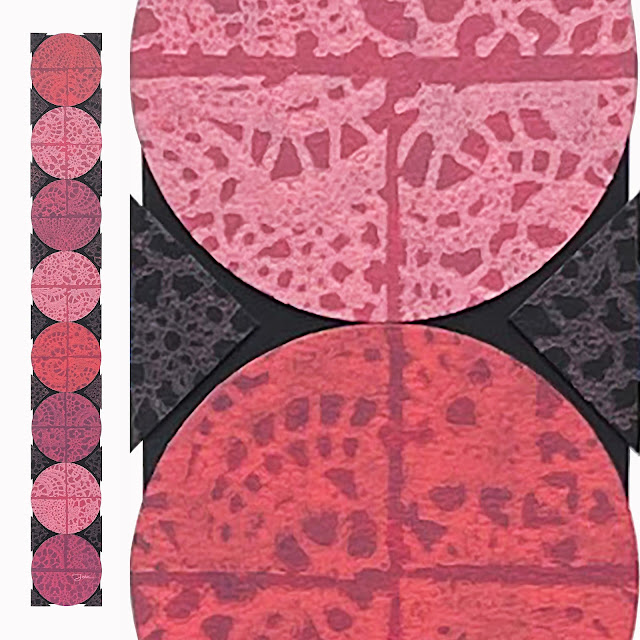Baobab, The Green Man
Baobab is Africa's tree and also what I have named my Green Man collograph.
Baobab trees are indigenous to 31 African countries. Because the Baobab has a fibrous bark and has no tree rings, it’s not clear how long the tree lives, though experts say a Baobab may live for 500 years, others estimate as many as 2000! By any standard the Baobab is the living elder of plants on a continent which reveres elders.
Many myths and legends are associated with the Baobab. Stories of the mischievous spirits that reside within them were collected by explorers of East and West Africa in the early twentieth century. In the Northern Cape Province of South Africa some people still believe wood spirits inhabit the flowers of the Baobab and it's said that those who pick them will be eaten by lions!
In many African communities the tree is recognized as a deity who has decided to live among humans. Village life and it's rituals are celebrated beneath it. In Burkina Faso, a mourning drum rite, reserved for revered chiefs, is also celebrated upon the death of the Baobab tree.
The Baobab is home to fruit bats, weaver birds, parakeets, lovebirds, to owls, hawks and predators of the bush who feed upon rodents that live among the Baobab's roots. The Baobab stores water, gallons and gallons of sustaining water, even in drought, one of the reasons it is known as "The Tree of Life".
Its' leaves and flowers serve as salad for humans. Its edible seeds, when cooked, provide a substitute for coffee. The white pulp of the fruit can be boiled into a sherbet-like lemonade which is very high in vitamin C. The tree provides no timber, its wood is soft like balsa, but the bark serves as food for elephants in drought and can also be made into rope, roofing material, and clothing.
Baobab trees are indigenous to 31 African countries. Because the Baobab has a fibrous bark and has no tree rings, it’s not clear how long the tree lives, though experts say a Baobab may live for 500 years, others estimate as many as 2000! By any standard the Baobab is the living elder of plants on a continent which reveres elders.
Many myths and legends are associated with the Baobab. Stories of the mischievous spirits that reside within them were collected by explorers of East and West Africa in the early twentieth century. In the Northern Cape Province of South Africa some people still believe wood spirits inhabit the flowers of the Baobab and it's said that those who pick them will be eaten by lions!
In many African communities the tree is recognized as a deity who has decided to live among humans. Village life and it's rituals are celebrated beneath it. In Burkina Faso, a mourning drum rite, reserved for revered chiefs, is also celebrated upon the death of the Baobab tree.
The Baobab is home to fruit bats, weaver birds, parakeets, lovebirds, to owls, hawks and predators of the bush who feed upon rodents that live among the Baobab's roots. The Baobab stores water, gallons and gallons of sustaining water, even in drought, one of the reasons it is known as "The Tree of Life".
Its' leaves and flowers serve as salad for humans. Its edible seeds, when cooked, provide a substitute for coffee. The white pulp of the fruit can be boiled into a sherbet-like lemonade which is very high in vitamin C. The tree provides no timber, its wood is soft like balsa, but the bark serves as food for elephants in drought and can also be made into rope, roofing material, and clothing.




Comments
Post a Comment